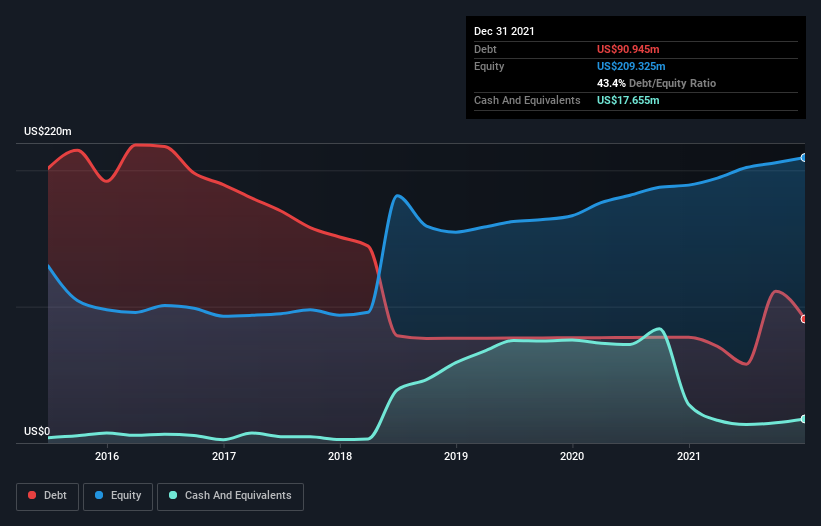Legendary fund manager Li Lu (who Charlie Munger backed) once said, ‘The biggest investment risk is not the volatility of prices, but whether you will suffer a permanent loss of capital.’ It’s only natural to consider a company’s balance sheet when you examine how risky it is, since debt is often involved when a business collapses. We can see that Myers Industries, Inc. (NYSE:MYE) does use debt in its business. But the more important question is: how much risk is that debt creating?
What Risk Does Debt Bring?
Debt is a tool to help businesses grow, but if a business is incapable of paying off its lenders, then it exists at their mercy. Part and parcel of capitalism is the process of ‘creative destruction’ where failed businesses are mercilessly liquidated by their bankers. However, a more frequent (but still costly) occurrence is where a company must issue shares at bargain-basement prices, permanently diluting shareholders, just to shore up its balance sheet. Having said that, the most common situation is where a company manages its debt reasonably well – and to its own advantage. The first thing to do when considering how much debt a business uses is to look at its cash and debt together.
What Is Myers Industries’s Net Debt?
As you can see below, at the end of December 2021, Myers Industries had US$90.9m of debt, up from US$77.6m a year ago. Click the image for more detail. On the flip side, it has US$17.7m in cash leading to net debt of about US$73.3m.
A Look At Myers Industries’ Liabilities
Zooming in on the latest balance sheet data, we can see that Myers Industries had liabilities of US$132.5m due within 12 months and liabilities of US$142.7m due beyond that. Offsetting this, it had US$17.7m in cash and US$103.2m in receivables that were due within 12 months. So its liabilities outweigh the sum of its cash and (near-term) receivables by US$154.4m.
Given Myers Industries has a market capitalization of US$821.3m, it’s hard to believe these liabilities pose much threat. But there are sufficient liabilities that we would certainly recommend shareholders continue to monitor the balance sheet, going forward.
We measure a company’s debt load relative to its earnings power by looking at its net debt divided by its earnings before interest, tax, depreciation, and amortization (EBITDA) and by calculating how easily its earnings before interest and tax (EBIT) cover its interest expense (interest cover). This way, we consider both the absolute quantum of the debt, as well as the interest rates paid on it.
Myers Industries’s net debt is only 1.1 times its EBITDA. And its EBIT easily covers its interest expense, being 11.6 times the size. So you could argue it is no more threatened by its debt than an elephant is by a mouse. Also good is that Myers Industries grew its EBIT at 17% over the last year, further increasing its ability to manage debt. When analysing debt levels, the balance sheet is the obvious place to start. But it is future earnings, more than anything, that will determine Myers Industries’s ability to maintain a healthy balance sheet going forward.
Finally, while the tax-man may adore accounting profits, lenders only accept cold hard cash. So we clearly need to look at whether that EBIT is leading to corresponding free cash flow. During the last three years, Myers Industries generated free cash flow amounting to a very robust 80% of its EBIT, more than we’d expect. That puts it in a very strong position to pay down debt.
Our View
Happily, Myers Industries’s impressive conversion of EBIT to free cash flow implies it has the upper hand on its debt. And the good news does not stop there, as its interest cover also supports that impression! Zooming out, Myers Industries seems to use debt quite reasonably; and that gets the nod from us. After all, sensible leverage can boost returns on equity. When analysing debt levels, the balance sheet is the obvious place to start.







































